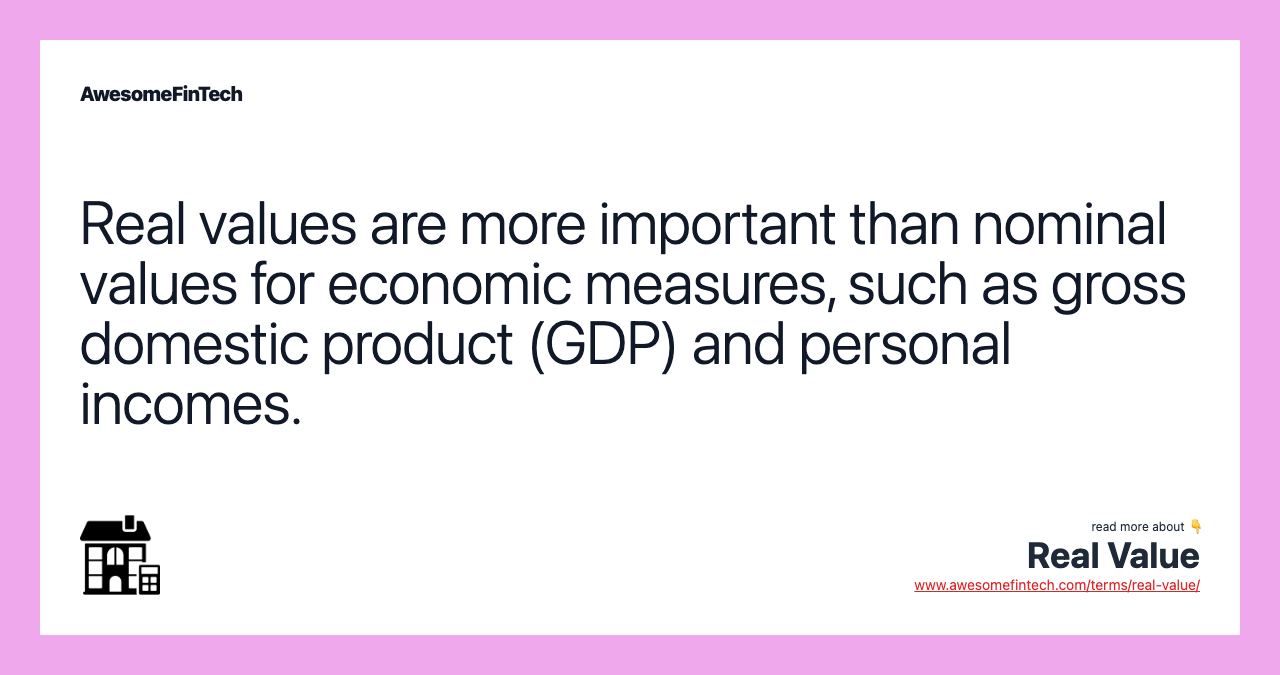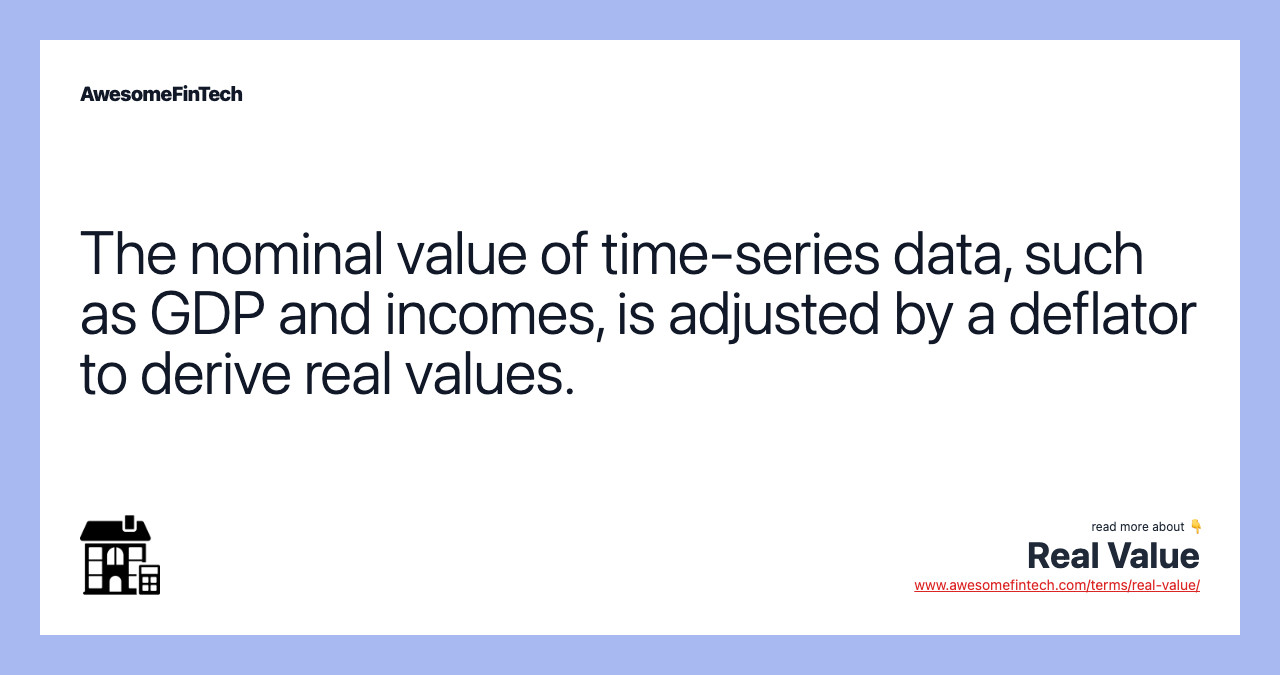Real Value
The real value of an item, also called its relative price, is its nominal value adjusted for inflation and measures that value in terms of another item. For example, if personal income is $50,000 in year one and $52,000 in year two, and the rate of inflation is 3%, then the nominal growth rate of income is 4% \[($52,000 – $50,000) ÷ $50,000\], while the real growth rate is only 1% (4% – 3%). Real value is obtained by removing the effect of price level changes from the nominal value of a good, service, or time-series data, so as to obtain a truer picture of economic trends. The real value of an item, also called its relative price, is its nominal value adjusted for inflation and measures that value in terms of another item. The real value of an item, also called its relative price, is its nominal value adjusted for inflation and measures that value in terms of another item. For example, businesses that release special limited editions of existing products can sometimes create a sense of a higher perceived value, due to exclusivity and novelty, even if the product has the same real value as an existing item that sells for a lower price.

More in Economy
What Is Real Value?
The real value of an item, also called its relative price, is its nominal value adjusted for inflation and measures that value in terms of another item.



Understanding Real Values
Real values are more important than nominal values for economic measures, such as gross domestic product (GDP) and personal incomes, because they help ascertain the extent to which increases over time are driven by inflation as opposed to what is driven by actual growth. For example, if personal income is $50,000 in year one and $52,000 in year two, and the rate of inflation is 3%, then the nominal growth rate of income is 4% [($52,000 – $50,000) ÷ $50,000], while the real growth rate is only 1% (4% – 3%).
Real value is obtained by removing the effect of price level changes from the nominal value of a good, service, or time-series data, so as to obtain a truer picture of economic trends. The nominal value of time-series data, such as GDP and incomes, is adjusted by a deflator to derive real values.
In the U.S., the Bureau of Economic Analysis (BEA) maintains the GDP deflator that is used to compute the real rate of economic growth. The deflator currently uses 2012 as the base year, which means that it is set to 100 for 2012, with other years reported relative to the 2012 dollar's purchasing power.
Real Value vs. Perceived Value
Real value is fairly easy to measure. A business must account for the costs of labor, raw materials, shipping, marketing, and product development, which allows it to calculate the product's real value. Perceived value isn't as easy, since many factors that play into it aren't tangible or precisely measurable. Factors such as scarcity (including artificial scarcity), marketing efforts, novelty, and brand associations all play into perceived value.
For example, two businesses may sell similar cars that cost the same amount to produce, giving them identical real values. However, one car will likely have a higher perceived value if its maker has a reputation for reliability and if the car is the center of a national marketing campaign that successfully builds buzz.
The impact of real and perceived values, and the differences between them, become real in sales numbers and in the pricing of products. A higher perceived value will lead consumers to think that a product is better than other items with the same real value selling for a similar price.
At the same time, the price can impact the perceptions of value. For example, businesses that release special limited editions of existing products can sometimes create a sense of a higher perceived value, due to exclusivity and novelty, even if the product has the same real value as an existing item that sells for a lower price.
Related terms:
Aggregate Demand , Calculation, & Examples
Aggregate demand is the total amount of goods and services demanded in the economy at a given overall price level at a given time. read more
Bureau of Economic Analysis (BEA)
The Bureau of Economic Analysis (BEA), a division of the U.S. Department of Commerce, is responsible for the analysis and reporting of economic data. read more
The Conference Board (CB)
The Conference Board (CB) is a not-for-profit research organization which distributes vital economic information to its peer-to-peer business members. read more
Economics : Overview, Types, & Indicators
Economics is a branch of social science focused on the production, distribution, and consumption of goods and services. read more
Gross Domestic Product (GDP)
Gross domestic product (GDP) is the monetary value of all finished goods and services made within a country during a specific period. read more
GDP Price Deflator
The GDP price deflator measures the changes in prices for all of the goods and services produced in an economy. read more
Inflation
Inflation is a decrease in the purchasing power of money, reflected in a general increase in the prices of goods and services in an economy. read more
Nominal
Nominal is a common financial term with several different contexts, referring to something small, an unadjusted rate, or the face value of an asset. read more
Nominal Value
Nominal value of a security, often referred to as face or par value, is its redemption price and is normally stated on the front of that security. read more
Personal Consumption Expenditures (PCE)
Personal consumption expenditures (PCEs) are imputed household expenditures for a defined period of time used as the basis for the PCE Price Index. read more